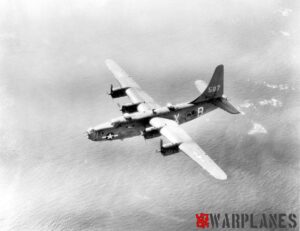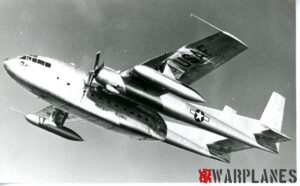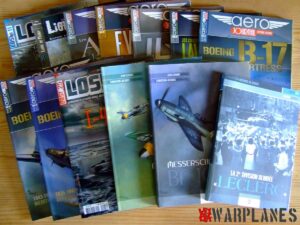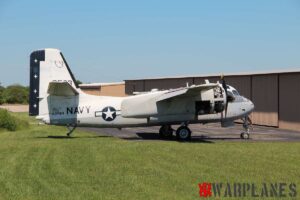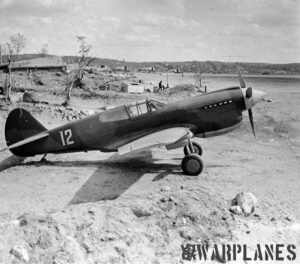Ohka
Situation for Japan in 1944 was so terrible, during hard war, they lost a lot of their equipment, many experienced officers and pilots were lost, Allied forces become more and more powerful and they overtaken most of the area previously invaded by Japan. Air raid on Japanese soil bring devastating effect on industry and population. Situation was desperate, especially after Marian island operation where the bulk of the experienced Japanese pilots were lost. In this unpleasant circumstances, group of officers start analyze for the new radical combat method of fight.

In the summer of 1944 the resolute Japanese Naval officers began to promote the use of drastic new combat method of suicide missions. That was idea was Ensign Mitsuo Ohta (transport pilot serving with the 405th Kokutai), who is the one to conceived the idea of a rocket propelled suicide aircraft. Vice Admiral Ohnishi was the one who ordered the establishing of the Kamikaze Special Attack Force in October 1944, which used conventional airplanes. With the help of personnel from the Aeronautical research Institute of the University of Tokyo, Ensign Ohta proceeded to draft preliminary plans for his proposed aircraft and in August 1944 submitted his drawings to the Dai Ichi Kaigun Koku Gijitsusho at Yokosuka (Naval Air Technical Arsenal at Yokosuka). Ohta’s proposal was gladly accepted by the Navy, who decided to proceed with the project and preparation of technical documentation for workshops. Engineers who technically develop idea was Masao Yamana, Tadanao Mitsugi and Rokuro Hattori.
Development
Bearing the designation MMXY7, the aircraft was primary designed as anti- invasion or coastal defense weapon to be launched from the mother plane, the MXY7 was to accelerate towards its target on the power of three solid propellant rockets mounted in the tail, being fired either singly or in group. Choice of powerplant was logical as well Japan did not have liquid power rocket engine which is more suitable for controllable operation (they did get from Germany documentations for Me 163 Komet but too late to introduce into wide scale production). The tiny aircraft was built of wood and non critical metal alloys and great care was taken in its planning to enable it to be mass produced by unskilled labor. As the aircraft was to be flown on its one way mission by pilots with only limited flying experience, instruments were kept to be a minimum and good maneuverability was demanded to achieve reasonable accuracy. And of course, no need for landing gear.

The design and construction of unpowered prototypes was completed in a matter of weeks and by the end of September 1944 ten MXY7 had been completed. Named Navy Suicide Attacker Ohka (Cherry Blossom) Model 11, the initial version was to carry a 1200 kg warhead in the nose and be transported in the bomb bay of a specially modified Navy Type 1 Attack Bomber Model 24J (G4M2e).A battery of three Type 4 Mark 1 Model 20 rockets engines, providing a combined thrust of 800 kg for 8 to 10 seconds, was fitted into rear section of fuselage. Initial flights trials without power began at Sagami in October 1944 and the first powered flight was made at Kashima during the following month. These trials proved successful and performance measured during an unmanned flight at Kashima in January 1945 indicated that at 3500m the Ohka Model 11 could reach a top sped 804 km/h and in dive 1,040 km/hwith full thrust.
Deployment
Without waiting for the results of the trials, the Navy placed the aircraft in full production and a total of 755 Ohka Model 11 were built between September 1944 and March 1945. Of these 155 were built by the Dai IchiKaigun Koku Gijitsusho at Yokosuka and 600 by the Dai Ichi Kaigun Fuji Hikoki K.K. at Kanegawa acting assubcontractors for wings and tail units. The 721st Naval Air Group completes the transfer from Hyakurigahara to Konoike airfield at November 7th 1944, Ibaraki Prefecture. After the arrival Capt Okamura gives his group the unofficial nickname of the “Divine Thunder Unit” (Jinrai Butai). Two pilots, Lt Kariya Tsutomu and FPO Kita Nobuo, was killed during testing of Ohka that month. End of this month, military ship Shinano was lost with 50 Ohka aboard.

On 21 March 1945, the Ohka Model 11 was taken in to battle by the 721 Kokutai but the sixteen G4M2e parent aircraft were intercepted by Hellcats and forced to release their weapons short of the target and all of the bombers were shoot down. The first success was achieved on 1st April when Ohkas damaged the battleship West Virginia and three transport vessels, while the first Allied ship sunk by Ohka aircraft was destroyer Mannert L. Abele, lost off Okinawa on 12 April.
Operation “Iceberg” – The Invasion of Okinawa start at 1st April 1945 and there were engaged 40 aircraft carriers, 18 battleships, 200 destroyers and over 1,000 support ships. Japan defense put Ohka into action and this resulted in 14 bombers and three Ohka to be lost. One GM4 hit USS Tyrrell, one hit USS West Virginia but did not explode. US Marines troops captured that day 15 Ohka and give em nickname Baka, which in Japanese mean fool. Another Ohka attack happen at 12th April, when eight G4M bombers were send to mission, only two returns. Same day nine G4M2e accompanied with A6M fighters were send to attack, three A6M and one Ohka hit USS Abele, which later sinks. Destroyer minesweeper USS Jeffers was attack by Ohka and AA gunners manage to destroy it but distance was so close that damage result in withdrawal of ship.

Faced with Ohka treat, US authorities extend defense range of ships. USS Stanly was under attack and result was three wounded sailors. Japanese lost 35 bombers and eight Ohka. Seven more G4M2e with Ohka’s were sent into attack from Kanoya at 14th April 1945 and all was lost. Fighter cover also destroy three more G4M2e who carry Ohka. Two days later six G4M2e were sent into attack against US ships at Okinawa and two bombers return, one still with attached Ohka. Lt(jg) Sawai Masao report that they success to hit target. Two Hellcats and two Corsairs intercept one G4M2e near Iheya Shima Island. Bomber release Ohka but it crash into sea due to the engine failure.

Allied shipping off Okinawa was attacked once again at 28th April 1945 with four bombers. Two bombers returned, one still with Ohka and one hit was managed by Ohka, piloted by Yamagiwa Naohiko. Two bombers were destroy by US fighters. One Ohka hit USS Shea at 4th May 1945. Ship was sent to repair and 35 man were lost in that attack. Several other bombers with Ohka were lost that day. Next day, 5th May, K711 bomber squadron is disbanded due to the heavy loses. Destroyer USS Hadley was lost at 11th May in multiple attack, last hit was by Ohka. Corsairs shoot down three bombers with Ohka that day during this Kamikaze attack. Between 18 March and 22 June 1945, the US forces reported encounters with a total of 57 Ohkas. Of these, 42 of the mother planes were shot down before they could launch their glider bombs. Four Ohkas managed to hit their targets. Most of them were used in Okinawa.

The slow and cumbersome parent aircraft proved to be extremely vulnerable when approaching to within a few miles of well defended targets and production of the Ohka Model 11 ceased in March 1945.
Variants
Forty five examples of the Ohka K-1, unpowered version with water ballast replacing the warhead and the power plant, were built by the Dai IchiKaigun Koku Gijitsusho to provide pilots with limited training for the main type. The water ballast was released during the landing phase to reduce the landing speed and the aircraft landing on retractable skids.
The Ohka Model 22 was planned as an improved version of this weapon to be carried by the faster Navy Bomber Ginga (P1Y1). Because of the limited clearance provided by the parent aircraft, the wing span of the Ohka Model 22 was smaller the that of the Model 11 and the warhead limited to 600 kg. To increase Ohka’s range so that the parent aircraft could release it at greater distance from the intended target, the Model 22 was powered by a Tsu-11, a Campini type jet engine. Fifty Ohka Model 22 were delivered by the Aichi Kokuki K.K. and with Murakami Hikoki K.K., Miguro Hikoki K.K. and Fuji Hikoki K.K. acting as subcontractors. Aichi inability to start production led to the decision to concentrate production of the Ohka Model 22 in the underground factories managed by the Dai Ichi Kaigun Kokusho, but the war ended before these factories were completed. One test flight was made in July 1945, but auxiliary rockets installed under the wings went off accidentally just after release causing a stall from which the pilots could not recover.

The Ohka Model 33 was an enlarged version of the Model 22 which, powered by a NE-20 turbojet and carrying an 800 kg warhead, was intended to be carried by the Navy Attack Bomber Renzan (G8N1). The low priority given to the G8N1 program led to the cancelation of the Ohka 33 before completing. Also unbuilt was the larger version of Ohka 43A, intended to be catapulted from surfaced submarines. Powered by a NE-20 turbojet, the Model 43A was designed to have folding wings for storage in deck hangars. The Ohka Model 43B, basically similar to the Model 43A, was designed for the defense of Japan’s coast and was to be launched from catapults installed in caves but nonhas been completed at the end of the war. Two seat training version, designated Ohka Model 43 K-1 KAI Wakazakura (Young Cherrs), was built in limited numbers and had the warhead replaced by a second cockpit and the addition of flaps and retractable skids for landing. A single Type 4 Mark 1 Model 20 rocket was mounted in the tail to manage powered flight.
Other developments of the Ohka series included a single Ohka Model 11 experimentally fitted with wings made by Nakajima out of thin steel; the Ohka Model 21 combining the powerplant of the Model 11 with the airframe of the Model 22; and the Model 53 which, powered by a Ne-20 turbojet, was to be towed aloft by another aircraft and released over the target.
Spirit of Kamikaze
Many time I have read comments that Kamikaze pilots are fanatics. Are they? Lets consider our self, are we ready to sacrifice our self for benefit of others, for our country? Japanese pilot who did took Kamikaze mission are completely different mental build then we are today, entire nation, heritage and spirit are far different so we are unable to measure and compare their action and dedication with anything known from our world. One of those who was dedicated to fly Ohka was Hideo Suzuki. He was former Tokkotai (Special Forces Unit) member of the Jinrai Butai (Thunder Gods Corps), and Suzuki volunteered to be the pilot of an Ohka, a manned rocket-powered aircraft, during Great Asia Pacific War, as WW2 is called in Japan. But war ended before Mr. Suzuki flew mission.
I wished I had died as an Ohka”, said Suzuki and continue:”for months, I kept seeing my comrades off. They all smiled as they boarded the plane, thinking that we would soon meet in Yasukuni Shrine. Our impending deaths did not feel like a sacrifice but more as a chance to do something good for others.
About the morality level say next Suzuki quote:
Attacks on civilians are unforgivable. War should be fought only among soldiers. I get angry when I hear Japanese bombers mentioned together with terrorists who attack civilians. We Japanese Tokkotai only aimed at military targets. That is the complete opposite of terrorists.
Post Mortem

A number of Ohka airplanes were captured at the end of the war and several samples were brought away. Most of the were destroyed on ground or sunk on ship who carry them.Yokosuka MXY7-K1 trainer were preserved in National Museum of US Navy and one Yokosuka MXY7-K1 in USAF Museum in Dayton. Yokosuka MXY7 Model 11 Ohka are preserved Planes of Fame Museum and in Yanks Air Museum, both Museums located at the airport in Chino, California. Sample machine Yokosuka MXY7 Model 22 Ohka with Ishikawajima Tsu-11 engine is preserved in Smithsonian National and Space Museum in Washington. There is also preserved Yokosuka MXY7-K2 Kai Model 43B. USMC Air-Ground Museum in Quantico, Virginia have preserved one Yokosuka MXY7 Model 11 Ohka. In home of origin, Japan, were preserved two Yokosuka MXY7 Model 11 Ohka, Iruma Air Force Base, Iruma, Saitama and another Kawaguchiko Motor Museum, Narusawa,

Yamanashi.One machine of the same version in India, Indian Air Force Museum, Palam, New Delhi.Four samples Yokosuka MXY7 Model 11 Ohka in UK; Yokosuka MXY7 Model 11: Royal Air Force Museum, Cosford, Yokosuka MXY7 Model 11: Fleet Air Arm Museum, Yeovilton, Somerset, Yokosuka MXY7 Model 11: Museum of Science and Industry in Manchester, Yokosuka MXY7 Model 11: Imperial War Museum Duxford, Cambridgeshire.
Srećko Bradić

